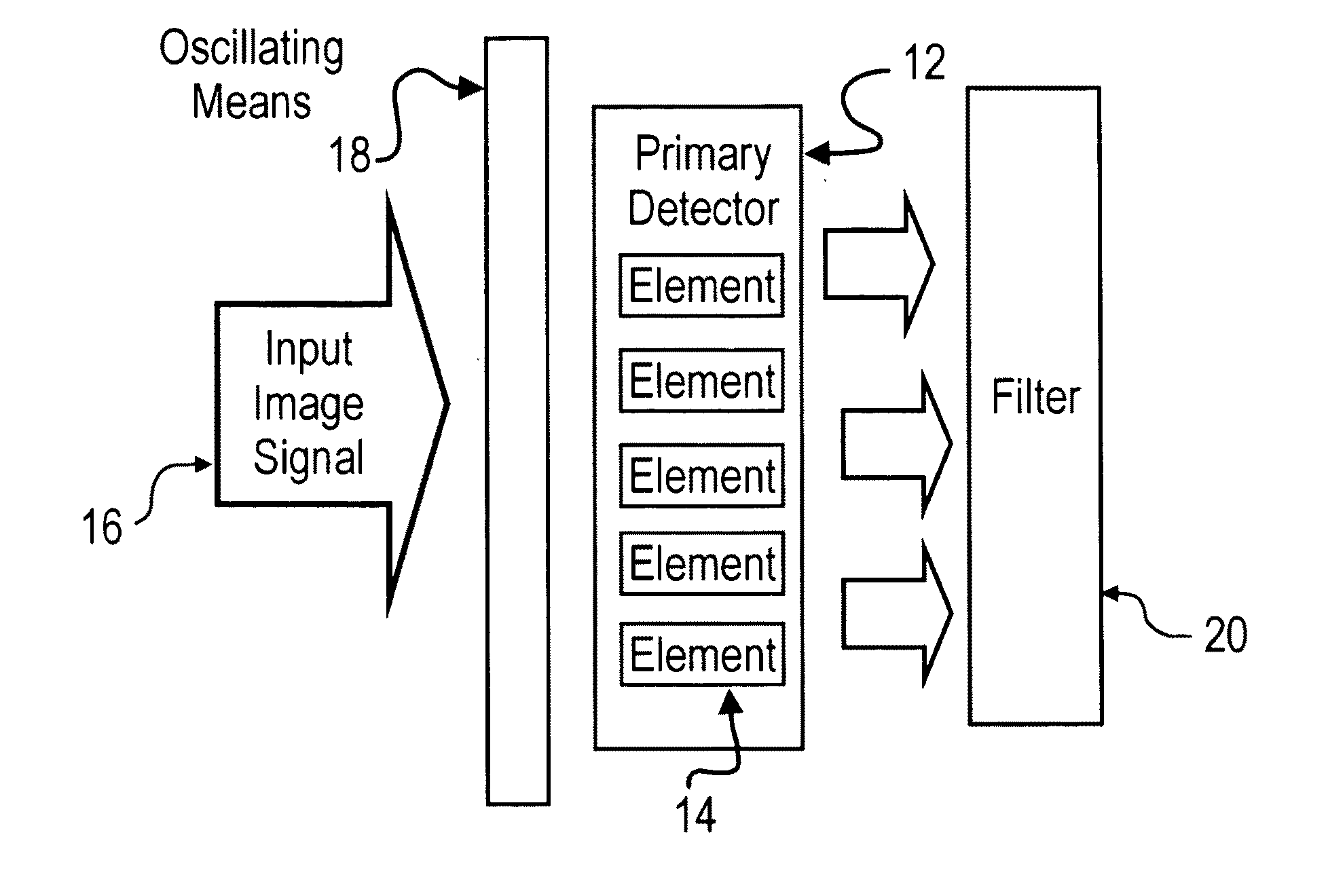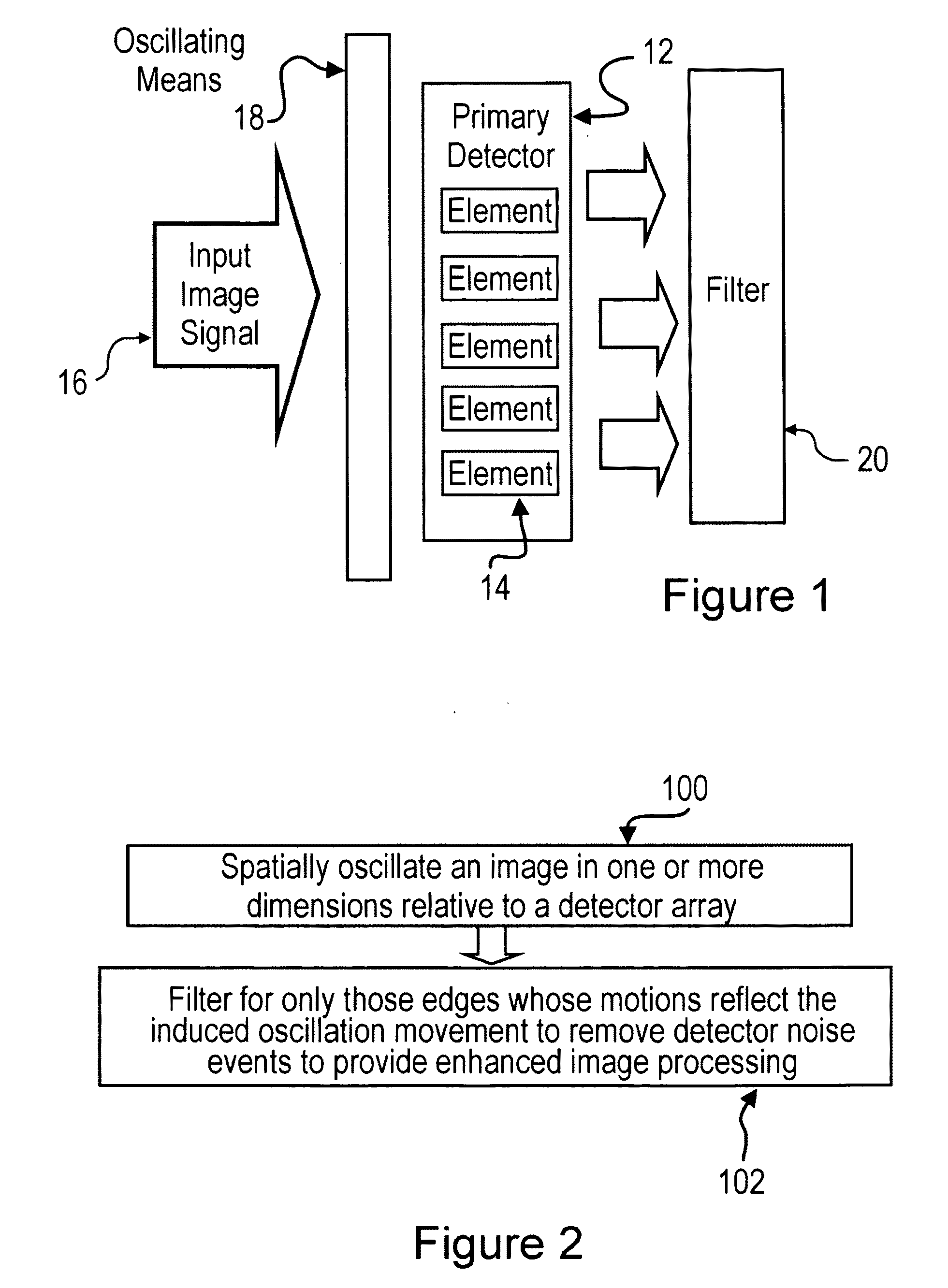Imaging System Utilizing Spatial Image Oscillation
- Summary
- Abstract
- Description
- Claims
- Application Information
AI Technical Summary
Benefits of technology
Problems solved by technology
Method used
Image
Examples
Embodiment Construction
[0044]The present invention is directed to a vision system, method and apparatus utilizing spatial oscillation. As illustrated in FIG. 1, the system includes a primary detector array 12 having detector elements 14 sensitive to an input image signal 16, means 18 for inducing a spatial oscillation in the image 16 relative to the primary detector array 12, and a filter 20 for filtering the image signal according to the spatio-temporal motion signature of the induced oscillation so as to extract those elements whose motions reflect the induced oscillation, therein removing noise events to provide enhanced image quality and simplified post-processing. In a preferred embodiment, the AER retinomorphic architecture is that of Azadmehr (see citation above). For specific applications (e.g. infrared) the primary array may be bump bonded (see Delbrück citation above) to Azadmehr's AER chip using suitable materials (e.g. indium antimonide).
[0045]In a preferred embodiment of the present invention...
PUM
 Login to View More
Login to View More Abstract
Description
Claims
Application Information
 Login to View More
Login to View More - R&D
- Intellectual Property
- Life Sciences
- Materials
- Tech Scout
- Unparalleled Data Quality
- Higher Quality Content
- 60% Fewer Hallucinations
Browse by: Latest US Patents, China's latest patents, Technical Efficacy Thesaurus, Application Domain, Technology Topic, Popular Technical Reports.
© 2025 PatSnap. All rights reserved.Legal|Privacy policy|Modern Slavery Act Transparency Statement|Sitemap|About US| Contact US: help@patsnap.com



